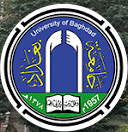Abstract
The current research is designed to test Phillip Carter's numerical efficiency using the Rush model according to the unique curve theory of the individual. To achieve this goal, the researcher relied on the precise steps in the development of the test starting with the translation of the test paragraphs and instructions from English to Arabic, taking into account the accuracy and comprehensiveness of all the ideas in the test, and then presented the instructions and test paragraphs consisting of (30) English to verify the sincerity of the procedure. It was then presented to a group of experts to ascertain the availability of the appropriate characteristics in terms of form and content. All sections of the tool were suitable for measuring what was set for measurement. The test was applied to 250 subjects from the preparatory stage randomly selected by the researcher.
The researcher relied on the Rash model (one of the models of the inherent characteristics) as a model for the analysis of the components of the test, and to make sure that the clauses of the tool for the model follow the following:
(6) paragraphs of the test were excluded because their values were greater than the value of the square of Kai at the level of significance (0.05), thus the number of remaining paragraphs (24) in the total test
Article Type
Article
First Page
267
Last Page
292
Publication Date
11-15-2018
Recommended Citation
Karim, Alaa Rahim
(2018)
"Philip Carter's numerical competency test is graded using the rash model according to the characteristic curve theory of the individual,"
Alustath Journal for Human and Social Sciences: Vol. 227:
Iss.
3, Article 12.
DOI: 10.36473/ujhss.v227i3.783
Available at:
https://alustath.researchcommons.org/journal/vol227/iss3/12










